For those of you who read my blog posts regularly, you might remember several 2020 posts related to the artwork of Joseph Patridge, an artist serving as a marine on board USS Warren during the Greek War of Independence. Two of the 19 images I included in one of the posts showed unidentified ports. Naturally, I assumed they showed Mediterranean ports since Partridge never served on any other US Navy ship and had not visited any ports outside of that region. Well, you know what they say about making assumptions — eventually they will make an a** out of you and me! Sadly, that assumption also revealed that no matter how careful one’s historical research may be, you can never uncover the whole story. How do I know this? Because those two images of unidentified ports show — wait for it — Valparaíso, Chile.
Immediately upon learning the identity of the ports, I asked myself the questions, “How is this possible? How does an artist who has never visited Valparaiso, Chile, paint accurate images of it?” Needless to say, my confidence in the accuracy of my research was shaken. Unfortunately, the only plausible answer I came up with has forced me to do something worse than make an assumption; it has forced me to (GASP…with hands over eyes!) make a conjecture. Consequently, this blog post comes with a disclaimer: I have no clue whether the story I am going to relate is true because there is no way to definitively prove that what I believe actually happened.
My story starts with researcher Jaime Ross of Viña del Mar, Chile. He is a genealogist who also studies Valparaiso during its early Republican era. Mr. Ross is a member of a Facebook group called Valparaíso del Recuerdo II. On December 1, 2015, a photograph titled Valparaíso seen from Cerro Artillería in 1820 According to an English Artist was posted on the group’s page. The image showed a drawing that was part of a small collection of artworks for sale at Donald A. Heald Rare Books in New York. Mr. Ross said Heald’s site described the image as being a copy of a drawing in a ship’s log.
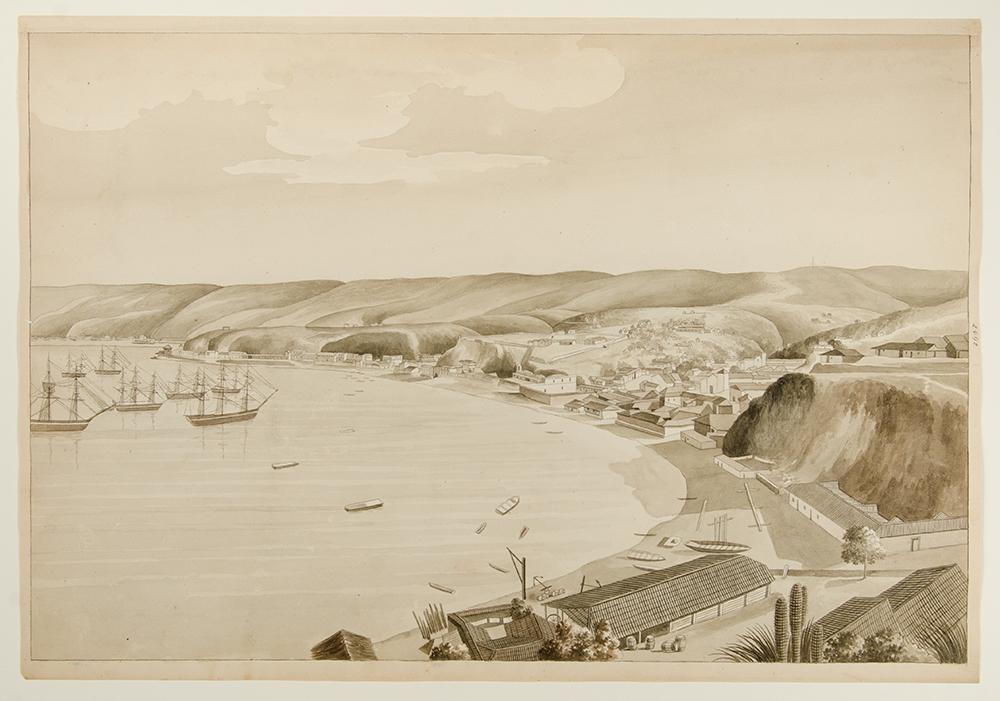
Curious, Mr. Ross began searching and found a logbook and journal containing similar images in the collection of The Huntington Library in San Marino, California. The Huntington manuscripts had been kept by 1st Lieutenant William M. Hunter of USS Franklin between 1821 and 1824. During this period, Franklin, commanded by Charles Stewart, was the flagship of the US Pacific Squadron. Entries in Hunter’s logbook and journal document many of Franklin’s ports of call in Chile, Peru, Brazil, and the Juan Fernández Islands with both words and images. Mr. Ross passed that information to the dealer in New York, who changed the attribution of the images to Lt. Hunter.
Five years later, on September 16, 2020, I posted my blog A Tour through the Mediterranean with Joseph Partridge. In that post, I included the two images of the unidentified ports, hoping someone would be able to identify the location of the scene — which is exactly what happened. While I didn’t appreciate being called ignorant when the mistaken attribution was revealed, I’ll accept it because the person who made the comment had no understanding of why a tentative attribution to a Mediterranean port had been made in the first place. My goal of giving exposure to the artworks so the location of the scenes could be revealed was successful, and that’s all that matters!
Here are the two images in question:
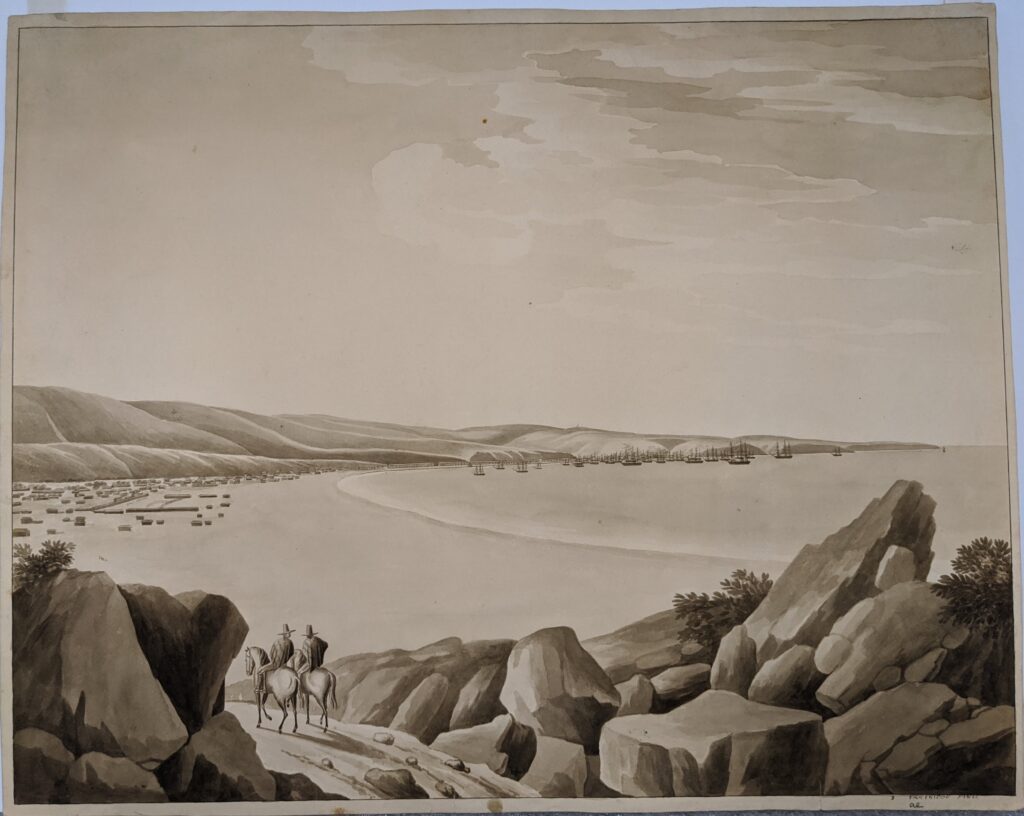
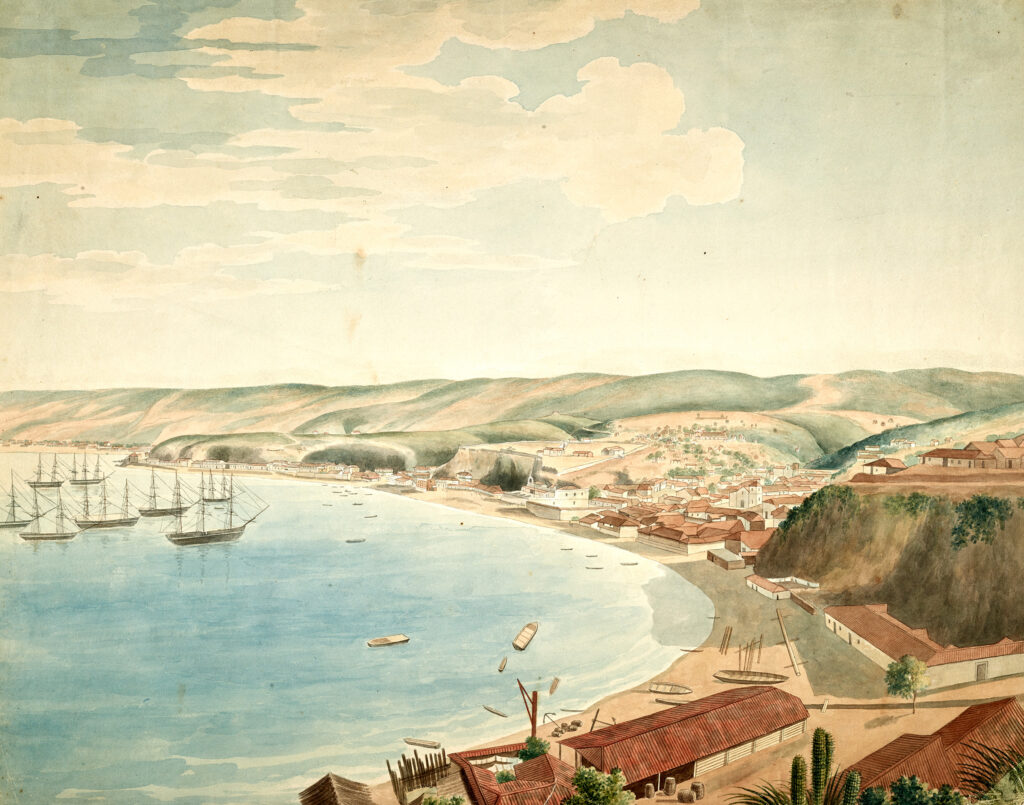
Jumping forward another five years to March 18, 2025, Alberto López Martínez, administrator of the Valparaíso del Recuerdo II site on Facebook, posted one of Joseph Partridge’s images (QW168 above) and identified it as the El Almendral in Valparaiso, Chile, before the 1822 earthquake. After reading my 2020 blog post, Mr. Ross became curious about when Joseph Partridge and USS Warren visited Valparaiso and how Lt. Hunter and USS Franklin fit into the story, and contacted the Museum the following day.
Needless to say, I was quite intrigued by Mr. Ross’s inquiry, as my research showed USS Warren didn’t patrol outside of the Mediterranean while Joseph Partridge was on board, and he never served on any other US Navy vessel. Partridge was a true “starving artist” who joined the US Marine Corps in 1825 to support his family, so I imagine his poor finances precluded international travel. As we discussed the images held by The Mariners’, Donald A. Heald, and The Huntington Library, questions began swirling around my brain. How could a man who never visited the Pacific paint views of Valparaiso accurately enough that the location could still be identified 195 years later? Why are those artworks so similar to the views in Lt. Hunter’s logbook? How do the images held by Donald A. Heald fit into the story? I wondered if there might be a connection between the two men, so I began researching Lt. Hunter’s career.

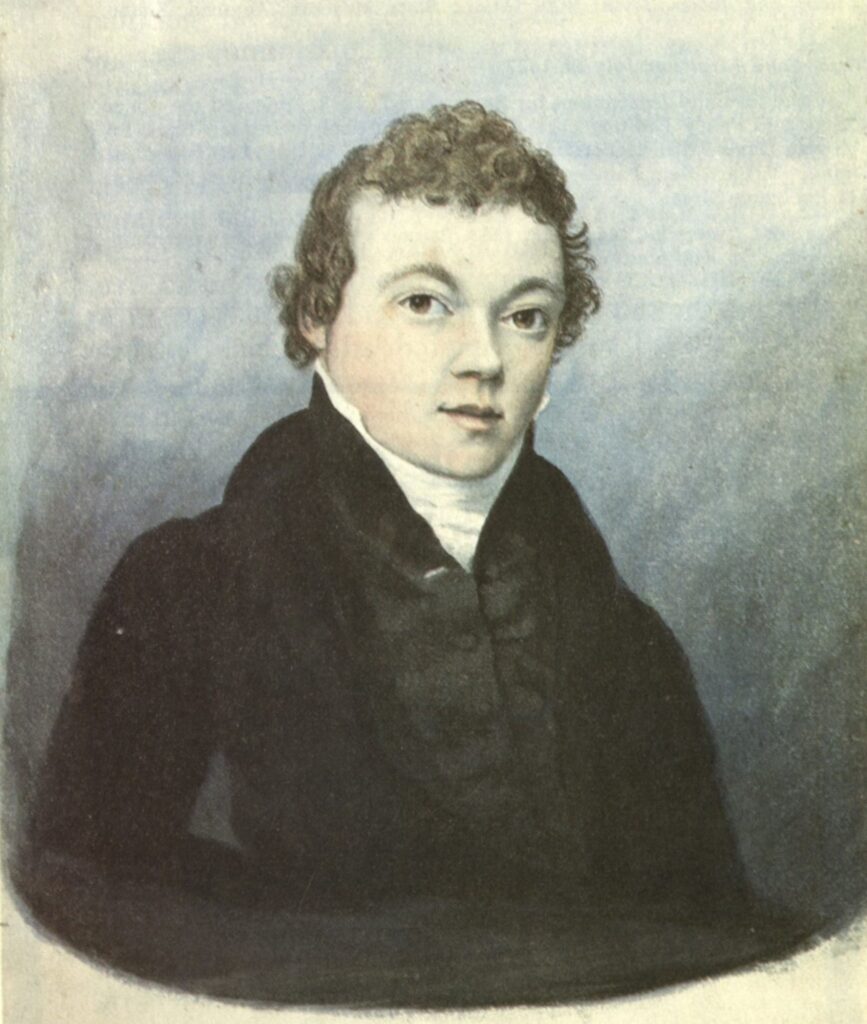
William Mason Hunter joined the US Navy on January 16, 1809, at the age of 15. He served on board USS President and was sailing master on USS Vixen at the start of the War of 1812. Hunter was on board when that vessel was captured by HMS Southampton on November 22, 1812. Five days later, both vessels were wrecked on a reef in the Bahamas, marooning everyone on Conception Island for about 10 days. After rescue and transport to Port Royal, Jamaica, Vixen’s crew were imprisoned on the Loyalist prison ship. Hunter doesn’t appear on Loyalist’s prisoner roll, so he was probably placed on parole, which was typical for naval officers taken captive. Hunter arrived back in Philadelphia on May 11, 1813.
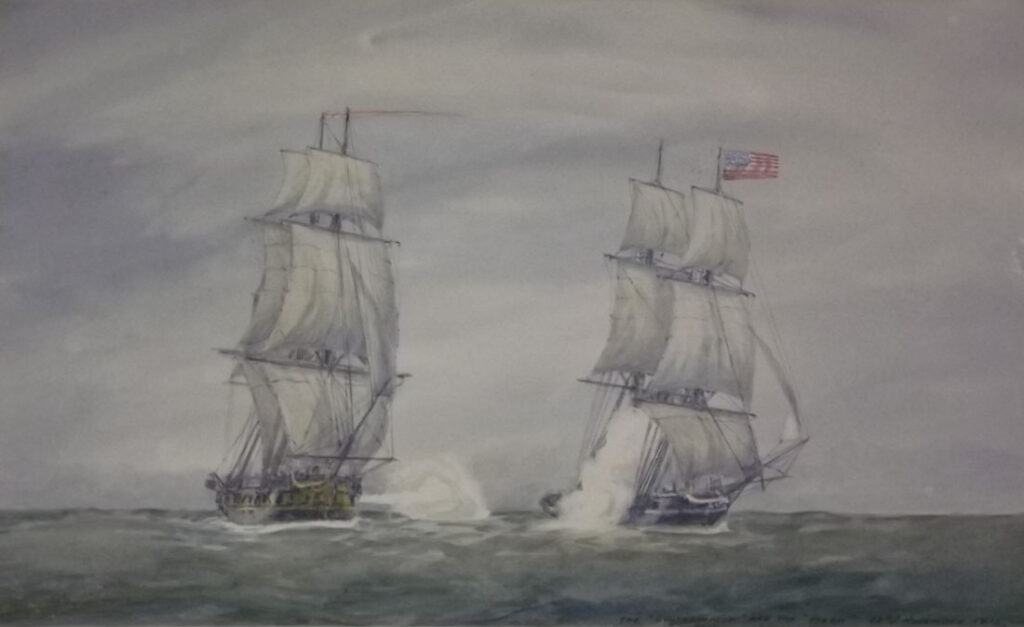
Hunter was promoted to lieutenant on July 24, 1813, and on October 10 joined USS Constitution under Captain Charles Stewart. He didn’t detach from Constitution until June 5, 1815, so this means he participated in the capture of HMS Pictou on February 15, 1814, and the battle with British warships Cyane and Levant on February 20, 1815. Hunter spent the next few years unemployed, probably due to the typical naval downsizing that occurred after a war ended.
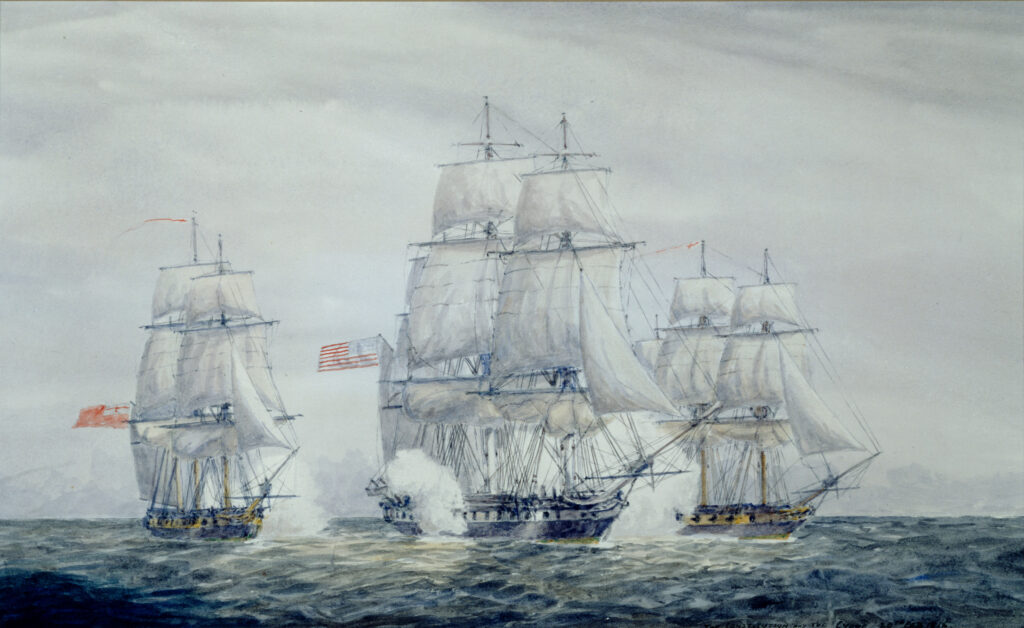
Hunter reactivated in 1821 and became 1st lieutenant and periodic commander of USS Franklin, a 74-gun ship commanded by Charles Stewart that served as the flagship of the American Pacific Squadron. Interestingly, Hunter pled guilty at a court martial on August 10, 1825, to a charge of neglect of duty laid by Stewart, but it doesn’t seem to have affected his career. Hunter was promoted to master commandant on March 21, 1826, and was back on duty by 1827. On October 2, 1828, William M. Hunter took over the command of the 18-gun sloop USS Lexington. Where was Lexington stationed, you ask? In the Mediterranean!
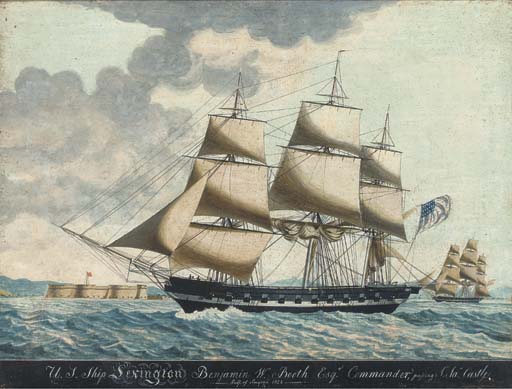
USS Lexington and USS Warren were both part of the American Mediterranean Squadron between 1827 and 1830. Newspaper reports show the two ships were frequently in the same port, usually at Smyrna (Izmir, Turkey), but also at Malta and Port Mahon on Menorca. It’s unclear if Partridge and Hunter knew each other, although I think it’s likely Captain Lawrence Kearny of USS Warren introduced the two men as he was well aware of Partridge’s artistic talent and may have been aware of Hunter’s as well. Yep! Another conjecture — can’t help myself — but at least I’m honest about it.
Even if they hadn’t met previously, on March 10, 1830, while both ships were at Port Mahon, Partridge was detached from USS Warren and reported to USS Lexington the following day. This move may have been made because Partridge’s enlistment was about to expire, and the Navy was preparing to send him back to the United States. He remained on board Lexington until April 14, which gave him more than a month of access to Capt. Hunter and his papers.
After comparing the images held by all three institutions, it’s still unclear who painted the images for sale at Donald A. Heald, although I think retaining the attribution to Captain Hunter is prudent. While Joseph Partridge was an accomplished painter of landscapes who appears to have added details not shown in Hunter’s images, there are also missing details which would be expected of someone who had never been to Valparaíso. For example, the second mountaintop from the right in the background of Hunter’s image of Valparaíso as seen from the Cerro Artilleria shows a signal station of some sort that does not appear in Partridge’s colored view of the same scene. Honestly, we’ll never know with any certainty who painted the unsigned images. I’m just relieved that our two unidentified ports have now been firmly placed in the correct hemisphere and continent!
Sources:
- Conjecture is defined as “an opinion or conclusion formed on the basis of incomplete information.”
- Yes, that’s an assumption, but see the article “Joseph Partridge, painter” by Arthur B. and Sybil B. Kern. Published in The Magazine Antiques, September 1984, pages 582-589. You can find it attached to all of the catalog records for the Partridge collection in our online database.
catalogs.marinersmuseum.org/object/CL6523 - The incident involved the unauthorized presence of a Spanish spy named Madrid on board Franklin that was due in large part to the activities of Charles Stewart’s crackpot wife Delia. Hunter pled guilty to the charge even though he was innocent.
- Capt Kearny was sending some of Partridge’s artworks to his brother Francis, a noted engraver and publisher in Philadelphia. Francis published at least four of Partridge’s images as engravings or aquatints, although only one identifies Partridge as the artist; the rest are simply marked ‘original drawing done under the direction of an officer in the U.S. Navy.’